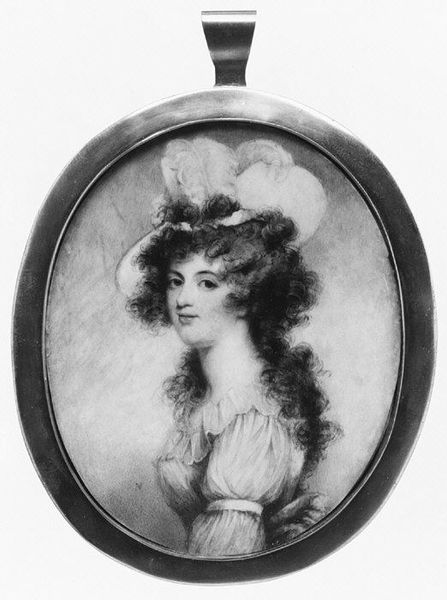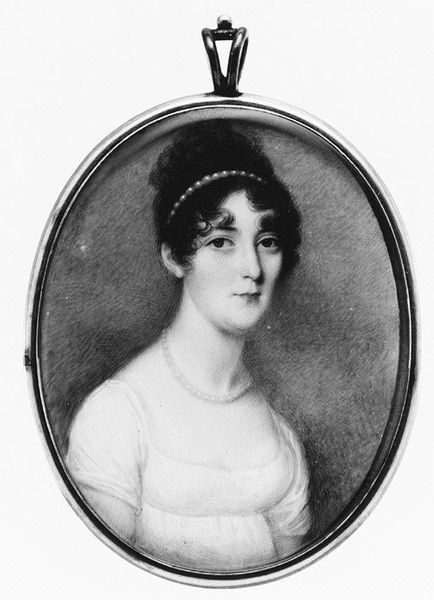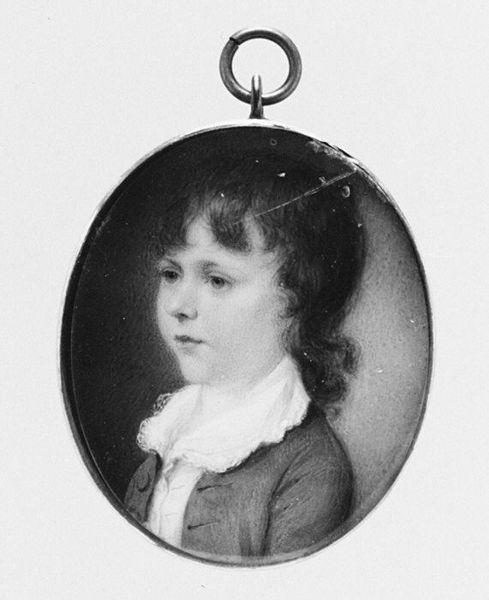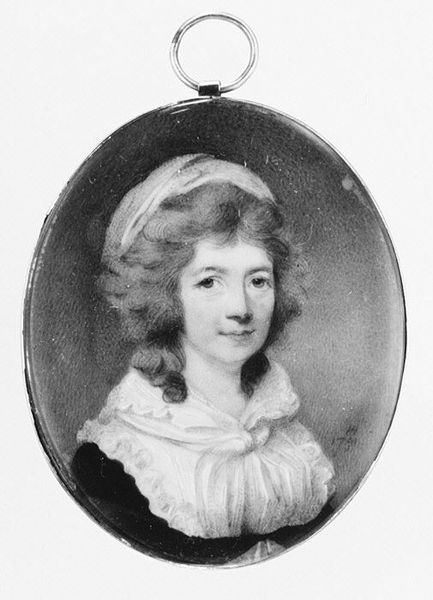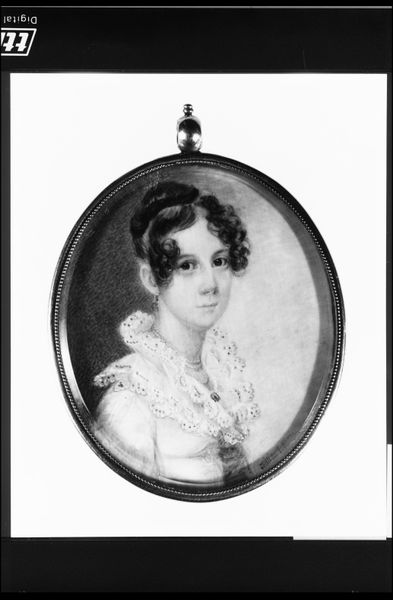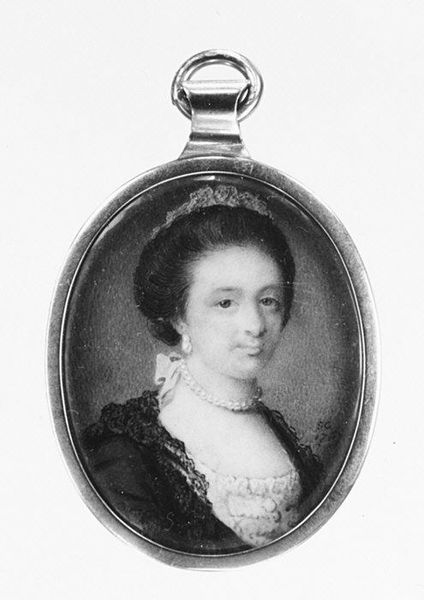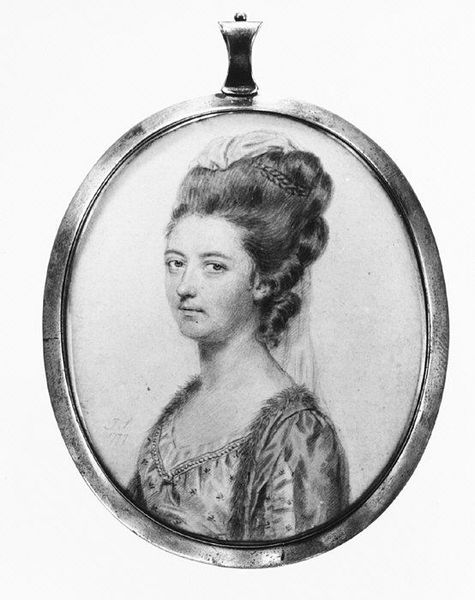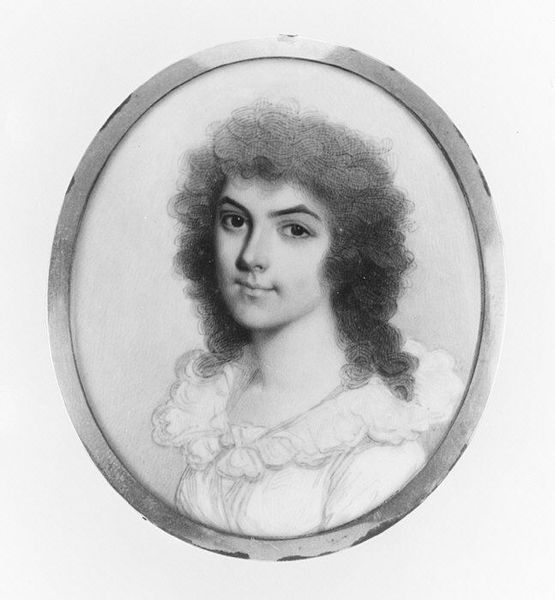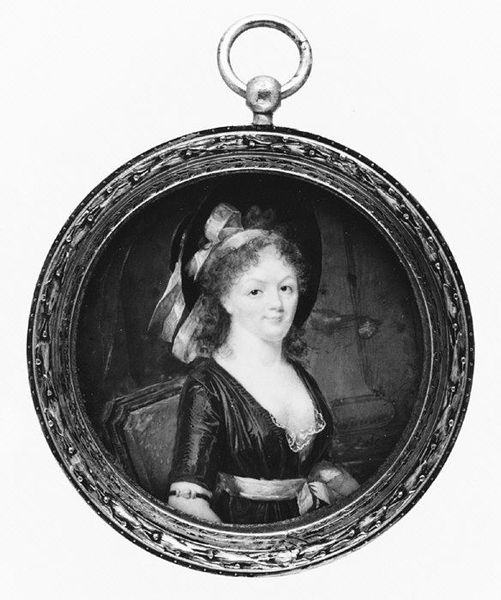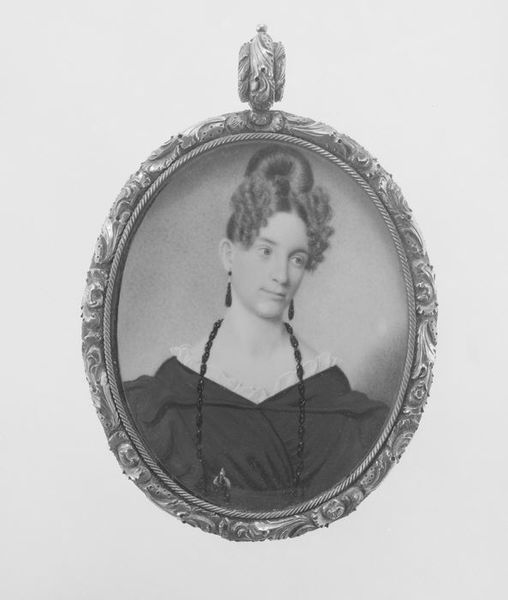
drawing, pencil
#
portrait
#
drawing
#
neoclacissism
#
intimism
#
romanticism
#
pencil
#
miniature
Dimensions: Oval, 2 1/4 x 1 7/8 in. (58 x 48 mm)
Copyright: Public Domain
Curator: This drawing, simply titled "Portrait of a Girl," dates from somewhere between 1785 and 1795. It's currently held in the collection of the Metropolitan Museum of Art. The artist, Sampson Towgood Roch, worked with pencil on paper to create this evocative miniature. Editor: My first impression is one of incredible intimacy. The soft, gray tones, combined with her direct gaze, create an almost palpable connection. It feels like a captured moment of serene introspection. Curator: The size contributes to that feeling. Miniatures like this were often personal objects, commissioned as keepsakes, tokens of affection, or mementos of loved ones. They served a social function, circulating within specific networks of family and friends, reinforcing bonds and solidifying social status through representation. Editor: The girl’s hairstyle is particularly interesting. It's quite natural and free-flowing compared to the elaborate powdered wigs we often associate with the late 18th century. Could this be indicative of changing social attitudes, perhaps a move towards greater simplicity and naturalism? Curator: Absolutely. You can see Neoclassical ideals emerging, reflected not just in the restrained composition but also in a deliberate departure from overt displays of aristocratic extravagance. There’s a romantic element here too, in the quiet intimacy, the focus on the individual. Editor: And those soft curls around her face – they speak of innocence and a certain vulnerability. The oval frame itself almost feels womb-like, cradling her image. Perhaps this is how she was intended to be seen and remembered: a symbol of purity and potential. Curator: It is important to consider how the framing, the display, influences its interpretation and perceived value, though. Think about where these portraits were kept – often in lockets, jewelry, or cases meant to be carried. Today we can see this delicate artwork up-close and away from private circulation and ownership in the vast Met. Editor: That's a fascinating point. So its original symbolic purpose and accessibility have shifted dramatically, now offering all visitors a peek into a very private past. Curator: Precisely. This single, seemingly simple image really becomes a focal point for thinking about changing ideas around family, status, and personal identity during a time of massive social and political transformation. Editor: Indeed, I come away sensing the stirrings of individual feeling, the quiet dignity captured in the gaze of one young girl bridging the gap between worlds.
Comments
No comments
Be the first to comment and join the conversation on the ultimate creative platform.


